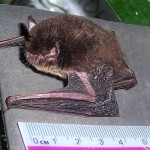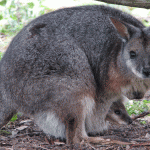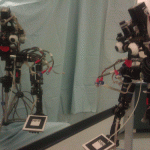
Grey long-eared bat. The oversized ears help the bat accurately pinpoint its prey. Image: Hugh Clark/Bat Conservation Trust
Ecologists develop a Europe-wide bat identification tool
To gain a better understanding of the world’s changing biodiversity, ecologists have turned to bats. These nocturnal creatures are globally distributed, and have traits that make them highly sensitive to human impacts, such as slow population growth rates and temperature-sensitive hibernation behaviour. By surveying and monitoring bat populations, researchers obtain a good idea of what is going on with biodiversity in general but, without a standardised method of identification, their process is flawed.
Previously, researchers led by Kate Jones, who works at the Zoological Society of London (ZSL), had run a project called iBats, in which citizen scientists recorded bat calls along transect routes and then helped analysed the results to figure out whether bat activity and distribution were changing. IBats began in Europe in 2005, and the major obstacle to the project’s success was an objective method to identify the species recorded in a consistent way across the different projects. “Hence we decided to develop an identification tool that works all over Europe,” says lead author Charlotte Walters of ZSL.
Scientists from ZSL, University College London, University of Auckland and nine other institutions worked together to amass echolocation calls from 34 different species from all over Europe. Their joint efforts are part of EchoBank, a global echolocation library of more than 200,000 bat calls. These calls were analysed to determine which measurements are most useful in distinguishing between species. The most useful measurements were then used to train ensembles of artificial neural networks to distinguish between the 34 species. These ensembles were packaged into the tool”“iBatsID.
“This tool provides a quick, simple and free method to identify bats in Europe in an unbiased and comparable way,” says Walters. “This will allow fast analyses of potentially huge sets of data from continental monitoring programs to identify how bat species distributions are changing and to provide the data conservationists need to decide on the best ways of protecting bat populations.”
The tool provides an objective method for comparable identification of bat calls from anywhere in Europe, which will allow the scientific community to draw reliable conclusions from acoustic data about how bat distributions are changing. According to Walters, the iBatsID can be used by anyone who has recorded a bat using either real time recording or time expansion.
iBatsID can identify 83 to 98 per cent of calls from pipistrelle species correctly, but the researchers believe that there is still room for improvement. “Classification rates for some species”“particularly Myotis““are still not very good so we advise caution in using the tool as the sole method of identification for some Myotis species,” Walters says. Researchers are now working on better ways of identifying the Myotis species.






